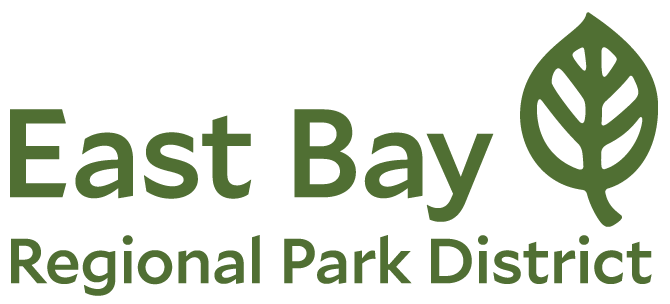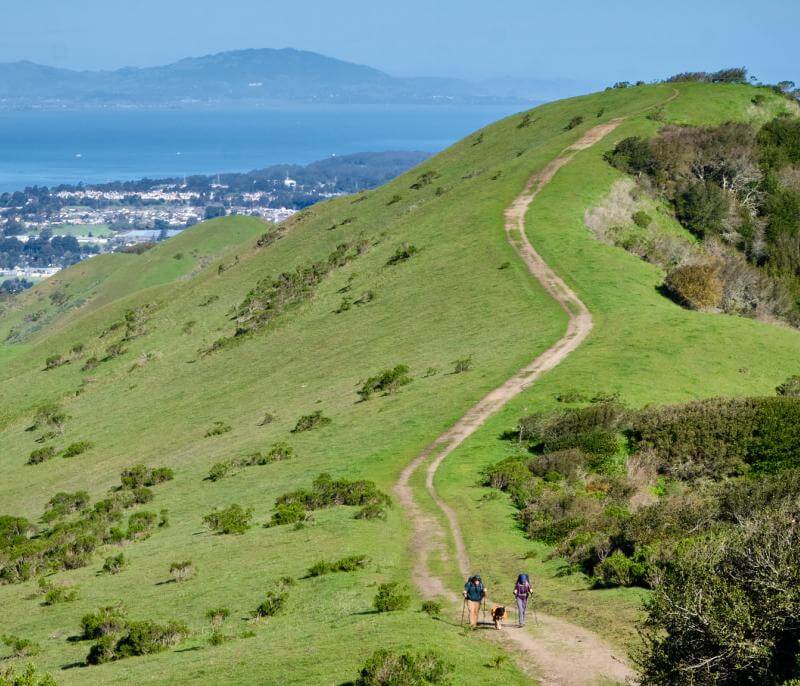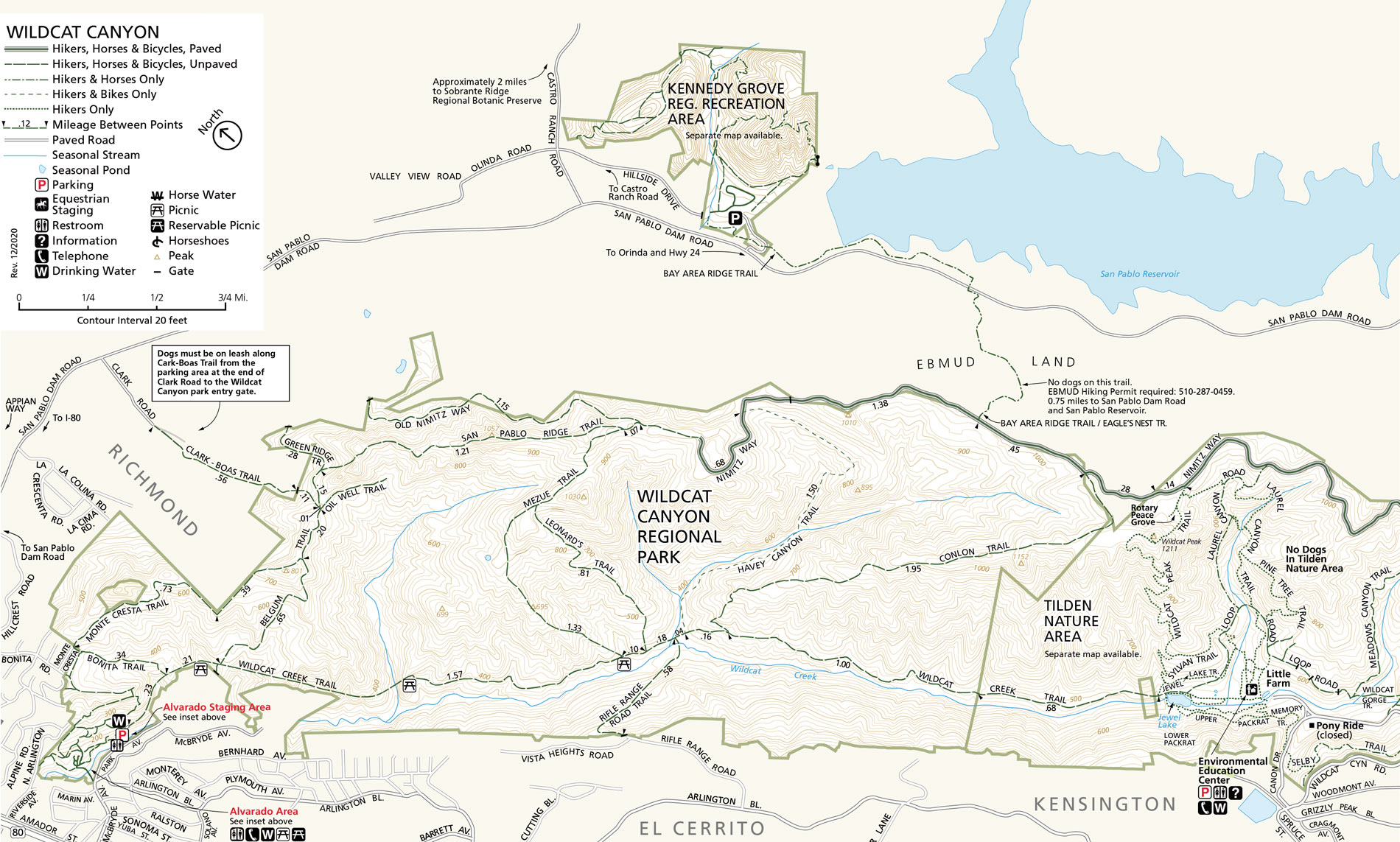Overview
The park is open 5 a.m. - 10 p.m.
Park curfew: 10 p.m. - 5 a.m.
Parking Lot Hours
The open hours for the main parking lot gate at Alvarado Staging Area are:
November - February: 7:30 a.m. - 5 p.m.
March - May: 7:30 a.m. - 6 p.m.
June - August: 7:30 a.m. - 7 p.m.
September - October: 7:30 a.m. - 6 p.m.
Parking: No fee
5755 McBryde Ave. Richmond, CA
Toll Free:
888-EBPARKS (888-327-2757), option 2 for reservations.
888-EBPARKS (888-327-2757), option 3, ext 4467 for park operations
Internet & Cellular Access

Public WiFi is not available.
Check AT&T, T-Mobile & Verizon Coverage.
Select 'Map Layers' and switch on 'No Data Coverage Areas'
Park Activities
Wildcat Canyon Regional Park encompasses 2,789 acres along the Wildcat Creek watershed and the surrounding hills and ridges. The park extends from the Tilden Nature Area above the Berkeley hills in the south to historic Alvarado Park at the north end in Richmond. It includes a significant portion of the paved Nimitz Way extending from Inspiration point in Tilden Regional Park. Easy access from the busy cities of the East Bay makes Wildcat Canyon a popular place for hikers, mountain bikers, equestrians, and those simply looking for a quiet place to spend an afternoon. Alvarado Park, with its historic stonework, provides picnic areas for large and small groups, a wonderful play area for children, and access to Wildcat Creek, all just steps from the busy streets of Richmond.
Wildcat Bike Trail Project
To address the increased popularity of mountain biking, the Park District is exploring additional bike access in Wildcat Canyon Regional Park.
Park District staff has identified a conceptual trail corridor that avoids or minimizes impacts to sensitive plant and animal communities based upon preliminary resource surveys completed in 2022. The results from these studies along with feedback from the community will be used to further develop a trail project that aims to benefit the park experience for everyone. To find out more about this project, view the Wildcat Bike Trail Project page.
To Reach The Park
Park Accessibility
A walk along Nimitz Way is paved and wheelchair accessible. There is trail staging at Inspiration Point on Wildcat Canyon Road in Tilden Park that offers wheelchair accessible parking and restrooms, but there is no drinking water at this staging area. Alvarado Park is paved from the entrance to the main lawn and picnic areas at Camp Alvarado and Elderberry. There is no vehicle access to the picnic areas. Bring a wagon or dolly to transport items from the parking lot to the picnic areas.
Accessibility Resources
Access Northern California, in partnership with BORP, provides information related to accessibility at Wildcat Canyon Regional Park. Access Northern California Wildcat Canyon Regional Park Accessibility Page
(Disclaimer: The Park District has not reviewed and does not guarantee the accuracy of the information provided by Access Northern California Accessibility.)
Attractions
Wildcat Canyon has 25 miles of trails (mostly fire roads), including 2.5 miles of paved trail on Nimitz Way, and 6 miles of single track trails in the Tilden Nature Area.
There is a children's playground in the park, and numerous reservable and first-come, first-served picnic and barbeque facilities.
Geology and Wildlife
Large coast live oaks, bay laurels, and a scattering of bigleaf maples and madrones grow on the park's east-facing slopes. North-facing hillsides support some beautiful, nearly pure stands of bay laurel, fringed with coast live oak. Moist chaparral of coyote brush, poison oak, elderberry, snowberry, bracken fern, and blackberry grow in thickets high on the north-facing slopes.
In the gorge of bedrock-cutting Wildcat Creek grows a riparian forest of alder, willow, creek dogwood, and bay laurel. The forest extends the length of Wildcat Creek and part way up the tributaries. The west- and south-facing canyon slopes are covered with introduced annual grasses (oat, rye, barley, etc.). A few stands of native bunch grasses persist. There are many native wildflower species.
Foxes, raccoons, skunks, and opossums range nightly through the canyon. Deer, ground squirrels, and voles forage more commonly by day. Coyotes are a commonly seen throughout the Park with potential to see the somewhat elusive mountain lion and bobcat as well. Gopher snakes, king snakes, and western racers inhabit the fields and meadows; garter snakes hunt the ponds and stream verges. In the forest are rubber boas and ringneck snakes. Aloft are redtail hawks, American kestrels, sharp-shinned and Cooper's hawks, and turkey vultures. Most nights you can hear a great horned owl. There are also many varieties of songbirds. Remember: please take neither animal nor plant life, as all such resources are protected for the enjoyment of everyone.
Nimitz Way Hiking and Biking
A walk along Nimitz Way is popular with hikers, bicyclists, and equestrians, and affords spectacular views from the crest of the East Bay hills. There are several other trails in Wildcat Canyon that connect to Nimitz Way. Check the Wildcat Canyon map.
Mountain Bikes
All bikes are prohibited in the area of the Tilden Nature Area's Environmental Education Center (EEC) and Little Farm on Widcat's south end. Bikes are also prohibited on any single-track trail in the Tilden Nature Area. To access Wildcat Creek Trail from the south, bikers must use the Loop Road above the EEC and Little Farm to Jewel Lake. Mountain Bikes are not allowed on the Laurel fire road connecting the Nimitz Way to the Loop Road. Mountain bikes are permitted on all other fire roads in Wildcat Canyon, as well as Havey Canyon Trail, which is a wide single-track.
Equestrian
Equestrians are prohibited in the area of Tilden Nature Area's EEC and the Little Farm, or on any single-track trail in the Tilden Nature Area. To access Wildcat Creek trail from the south, equestrians must use the Loop Road above the EEC and Little Farm to Jewel Lake. Equestrians are permitted on the Laurel fire road connecting the Loop Road to the Nimitz Way.
Dogs
Dogs are not permitted in the Tilden Nature Area. Dogs must be on leash at all times on the Nimitz Way, in all parking/staging areas, and in all developed areas. Dogs may be off leash in open space areas, provided they are under voice control. Anyone wishing to walk more than three dogs at a time must get a dog-walking permit from the Park District, and access is allowed to Wildcat Canyon only through the north end of the park from the staging area off Park Ave. and walkers may only use Wildcat Creek Trail for two miles extending south from that point. For more information. Visit our Dog information page.
Picnic Sites
Alvarado Park has several picnic grounds with table and BBQs, some of which are reservable for large groups. Visit the Wildcat Canyon Picnic Areas webpage for more information or call Reservations to reserve.
Upcoming Events
History
The early history of Wildcat Canyon is similar to the history of all of California. Early Spanish exploration and ranchos displaced Native American communities that had existed for thousands of years. As the East Bay developed into a network of busy towns and cities, the canyon was primarily used as the region's water source, until the mid 1920s when the East Bay Municipal Utility District (EBMUD) brought Mokelumne River water to the East Bay. In 1935 the East Bay Regional Park District acquired the southern part of Wildcat Canyon to create Tilden Regional Park. In 1952 the northern part was sold by EBMUD to private interests. In 1967 the Park District bought another 400 acres, and by 1976 the Park District owned enough land to form a 2,197-acre parkland. The park’s acreage now stands at 2,427.
Alvarado Park is located at the northern end of Wildcat Canyon, on the Richmond/El Sobrante border. This area was a private park beginning in 1909, with ferry boats and a trolley bringing families from East Bay towns, and even San Francisco. The original facilities at Alvarado Park included an open-air pavilion and dance hall (later converted to a popular roller rink). The park was taken over by the City of Richmond in 1923, and the stone masonry seen today was constructed during the City of Richmond’s ownership through various Depression-era work programs. The park was transferred to the East Bay Regional Park District in 1985 and is considered a unique variation on the National Park Service-style of “rustic park architecture.” While the original pavilion and dance floor are gone, what remains is the extensive stonework, including stone walls, stone light standards, and a beautiful stone arch bridge across Wildcat Creek. Because of its unique history and depression-era WPA stonework, Alvarado Park is included in the National Register of Historic Places.


